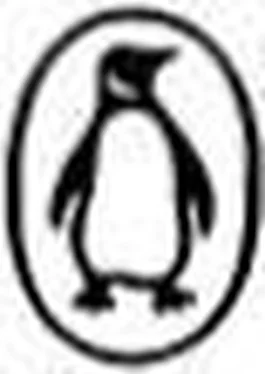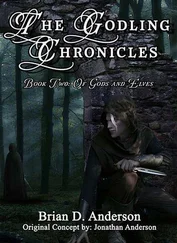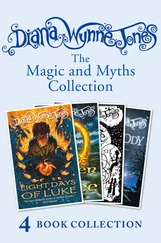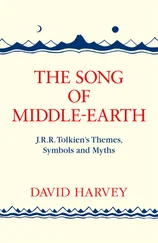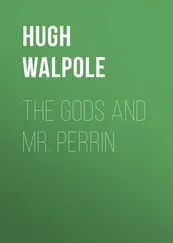1. J. Brønsted, The Vikings , Penguin Books, 1964, pp. 139 ff.
2. Viking Club Saga Book IV, 1906, pp. 326 ff.
3. R. L. S. Bruce-Mitford, Proc. Suffolk Inst. of Archaeology , 26, 1955, pp. 1 ff.
4. I am grateful for information about this excavation received from Mr Charles Green before the publication of his book cited above. For the Caister ship-graves see Green, op. cit., p. 57.
1. Ynglinga Saga , 23, and Skjǫldunga Saga , 27.
1. A. Houdris-Crone, The Temple of Nehalennia at Domburg , 1955.
1. M. Eliade, Le Chamanisme et les techniques archïques de l’extase , Paris, 1951, pp. 407–8.
2. The Muria and their Ghotul , Oxford, 1947, pp. 149–50.
1. Odin is shown hanging from the tree on an early Swedish carved stone along with scenes that seem to belong to the story of the gaining of the mead.
1. A figure consisting of three legs radiating from a common centre. The valknut is formed of three triangles linked together.
1. J. S. Ryan, ‘Othin in England’, Folklore , 74, 1963, pp. 472 ff.
1. ‘Oseberggraven Haugbrottet’, Viking , 1945, pp. 1 ff.
1. Flateyjarbók, þáttr þorleifs jarlaskálds , 1, 174.
2. H. R. Ellis, The Road to Hel , Cambridge, 1943, pp. 105 ff.
1. H. R. Ellis, op. cit., pp. 87 ff.
1. Antiquaries’ Journal , 4, 1924, pp. 113 ff.
2. Burton-on-Trent Natural History and Archaeological Society Trans ., 1, pp. 156 ff.
3. F. W. Bull, Recent Discoveries of Anglo-Saxon Remains, Kettering , 1904.
1. E. Salin, Le Haut Moyen Age en Lorraine , 1939, pp. 87 ff.
1. H. R. Ellis Davidson, ‘The Hill of the Dragon’, Folklore , 61, 1950, pp. 180 ff.
1. Gerd also refers to her brother’s slayer in Skírnismál , 16, and it has been suggested that she and Idun are connected in some way.
1. Several buckets of apples were found on the Oseberg ship, in a burial which appears to have associations with the Vanir (see pp. 95, 137).
1. G. Dumézil, Jupiter, Mars, Quirinus , Paris, 1941, pp. 159 ff.
1. Also with birds of various kinds, on the strength of the adjectives applied to him.
1. B. F. von Richthofen, Rechtsquellen , p. 439.
1. B. Pering, Heimdall , Lund, 1941.
2. In Études germaniques , 1955, pp. 266 ff.
3. H. Pipping, ‘Eddastudier’, Studier i Nordisk Filologi , 16, 1925, pp. 23 ff.
1. N. K. Chadwick, ‘Pictish and Celtic Marriage…’, Scottish Gaelic Studies , 7, 1953, pp. 85 ff.
1. Dumézil’s work on Loki ( Loki , 1959, and Les Dieux des Germains , 1959), provides arguments against this.
1. A. Olrik, Ragnarök: die Sagen vom Weltuntergang , Berlin, 1922.
2. ‘The Problem of Loki’, F.F. Communications . Helsingfors, 110, 1933, pp. 19 ff.
1. Viking Club Saga Book , 111 (1), London, 1902, p. 53.
2. H. R. Ellis Davidson, ‘Folklore and Man’s Past’ (paper given to the British Association for the Advancement of Science, Aberdeen, 1963), Folklore , 74, 1963, pp. 534–6.
1. P. Radin, The Trickster: a Study in American Indian Mythology , 1956.
1. J. Brøndsted, The Vikings , Penguin Books, 1964, p. 277.
1. Saxo Grammaticus, Gesta Danorum , 111, 70–81.
1. Jan de Vries, ‘Deh Mythos von Balderstod’, Arkiv fôr Nordisk Filologi , 70, 1955, pp. 41 ff.
1. A. B. Cook, ‘The European Sky-God’, Folklore , 17, 1906, pp. 172 ff.
2. For early beliefs in the milk-yielding tree, see G. R. Levy, The Gate of Horn , London, 1948, pp. 120 ff.
1. The suggested meaning, ‘hill or rock with an opening’ (Turville-Petre, Myth and Religion of the North , 1964, p. 64), suggests rather the Cosmic Mountain at the centre where the gods dwell (Eliade, Images and Symbols , 1961, pp. 42 ff.). This, of course, is closely linked with the World Tree.
1. Jan de Vries, Altgermanische Religionsgeschichte , Berlin, 1957, 11, p. 380.
1. Jan de Vries, ‘La Valeur religieuse du mot germanique irmin,’ Cahiers du Sud , 314, 1952, pp. 18 ff.
1. ‘Ginnungagap’, Acta Philologica Scandinavica , 5, 1930–4, pp. 41 ff.
1. J. de Vries, Altnordisches Etymologisches Wörterbuch , Leiden, 1961, vistra .
1. Tacitus, Annals , XIII, 57.
1. M. Haavio, ‘Väinämöinen, Eternal Sage’, F.F. Communications (Helsinki), 144, 1952, pp. 145 ff.
1. The Myth of the Eternal Return , trans. Trask, 1955.
2. Ragnarök: die Sagen vom Weltuntergang , Berlin, 1922.
1. R. C. Zaehner, The Dawn and Twilight of Zoroastrianism , 1961, p. 135.
2. Geography , IV, 4.
1. Brate and Wessen, Södermanlands Runinskrifter , p. 117.
1. R. Reitzenstein, Die nordischen, persischen und christlichen verstellungen vom Weltuntergang , 1926.
2. See K. Berg, ‘The Gosforth Cross’, Journal of the Warburg and Court-auld Institutes , 21, 1958, pp. 27 ff., where excellent illustrations are given.
1. ‘Surt’, Arkiv für Nordisk Filologi , 21, 1905, pp. 14 ff.
1. The unknown composer of the poem known as The Seafarer .
1. Bede’s Ecclesiastical History , 11, 15.
1. Bede, Ecclesiastical History , 11, 13.
